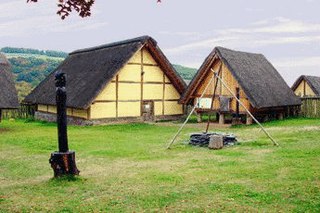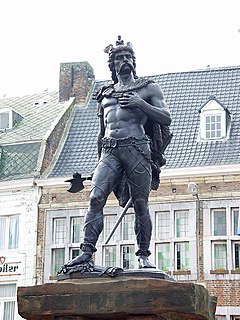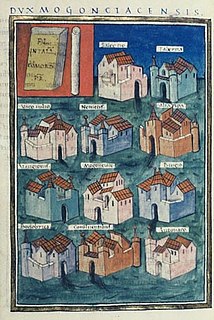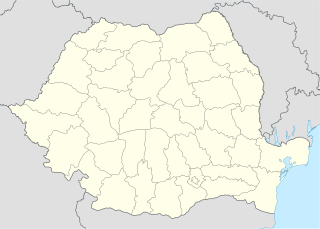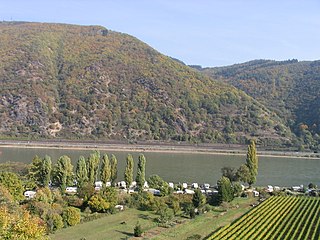This article needs additional citations for verification .(April 2019) (Learn how and when to remove this template message) |
 |
| Part of a series on the |
| Military of ancient Rome |
|---|
| Military of Ancient Rome portal |
The Ala Gallorum Indiana ("Indus's Wing of Gauls") was a Gaulish auxiliary cavalry unit in the Roman army, named after its first commander, Julius Indus, [1] a nobleman of the Treveri who helped put down a rebellion of the Treveri and Aedui in 21.

Gaul was a historical region of Western Europe during the Iron Age that was inhabited by Celtic tribes, encompassing present day France, Luxembourg, Belgium, most of Switzerland, parts of Northern Italy, as well as the parts of the Netherlands and Germany on the west bank of the Rhine. It covered an area of 494,000 km2 (191,000 sq mi). According to the testimony of Julius Caesar, Gaul was divided into three parts: Gallia Celtica, Belgica, and Aquitania. Archaeologically, the Gauls were bearers of the La Tène culture, which extended across all of Gaul, as well as east to Raetia, Noricum, Pannonia, and southwestern Germania during the 5th to 1st centuries BC. During the 2nd and 1st centuries BC, Gaul fell under Roman rule: Gallia Cisalpina was conquered in 203 BC and Gallia Narbonensis in 123 BC. Gaul was invaded after 120 BC by the Cimbri and the Teutons, who were in turn defeated by the Romans by 103 BC. Julius Caesar finally subdued the remaining parts of Gaul in his campaigns of 58 to 51 BC.
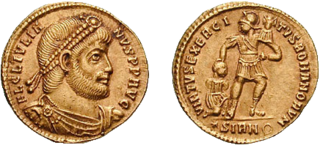
The Roman army was the terrestrial armed forces deployed by the Romans throughout the duration of Ancient Rome, from the Roman Kingdom to the Roman Republic and the Roman Empire, and its medieval continuation the Eastern Roman Empire. It is thus a term that may span approximately 2,206 years, during which the Roman armed forces underwent numerous permutations in composition, organisation, equipment and tactics, while conserving a core of lasting traditions..
Julius Indus was a nobleman of the Gaulish Treveri tribe. In 21 AD he helped the Romans put down a rebellion of the Treveri and Aedui. He went on to lead the Ala Gallorum Indiana cavalry unit which may have been involved in the Roman invasion of Britain, and was certainly posted at Corinum (Cirencester) in the mid-to-late 1st century.
The Ala Indiana is thought to have participated in the Roman conquest of Britain, and by the mid-to-late 1st century was posted at Corinum (Cirencester). In 98 it is recorded in Germania Inferior, and in 134 in Germania Superior. The only mention of this ala in Britain is the tombstone of an eques from Cirencester with a style dating around 70.

The Roman conquest of Britain was a gradual process, beginning effectively in AD 43 under Emperor Claudius, whose general Aulus Plautius served as first governor of Roman Britain.

Cirencester is a market town in east Gloucestershire, England, 80 miles (130 km) west northwest of London. Cirencester lies on the River Churn, a tributary of the River Thames, and is the largest town in the Cotswold District. It is the home of the Royal Agricultural University, the oldest agricultural college in the English-speaking world, founded in 1840. The town's Corinium Museum is well known for its extensive Roman collection. The Roman name for the town was Corinium, which is thought to have been associated with the ancient British tribe of the Dobunni, having the same root word as the River Churn. The earliest known reference to the town was by Ptolemy in AD 150.

Germania Inferior was a Roman province located on the west bank of the Rhine and bordering the North sea.



